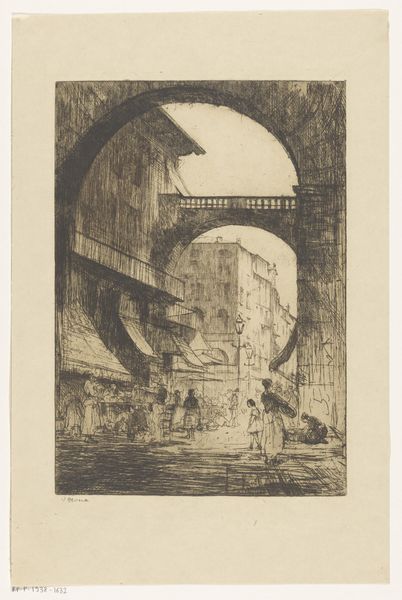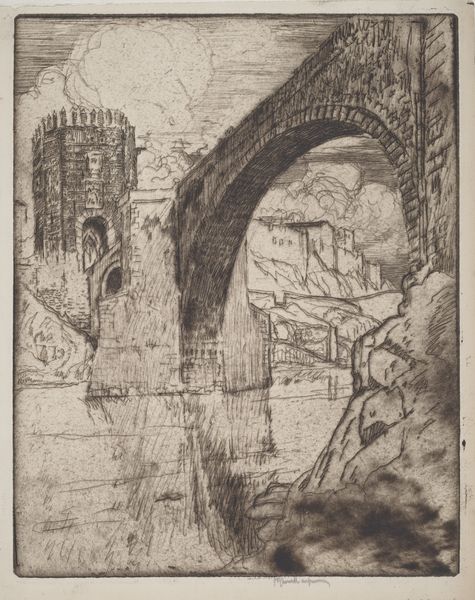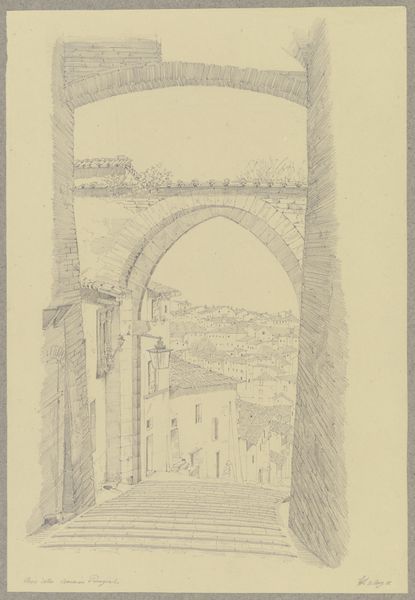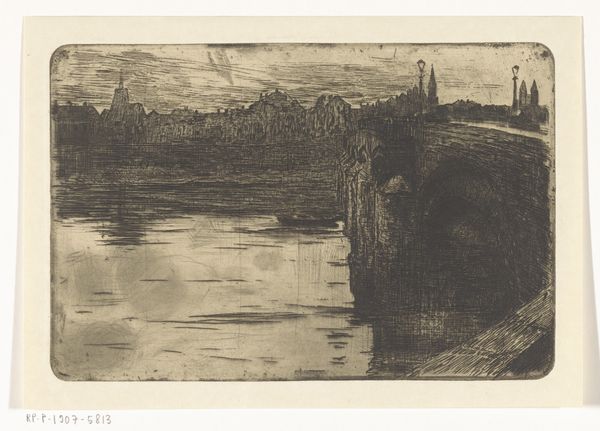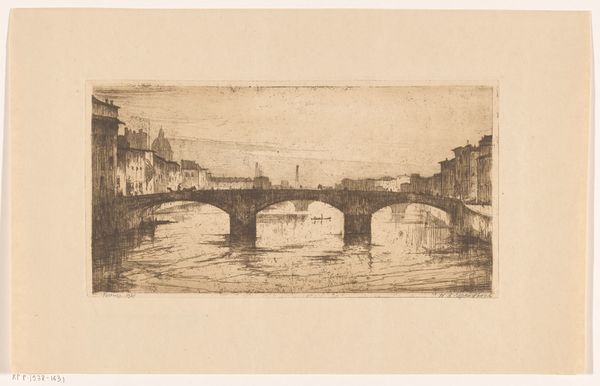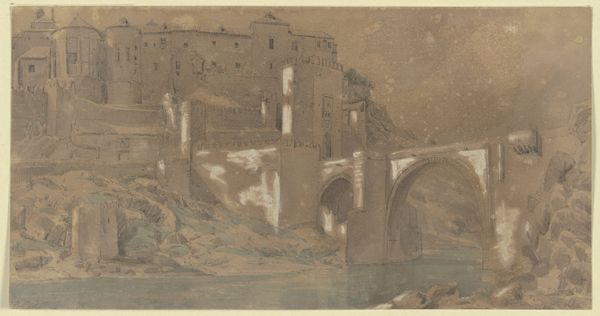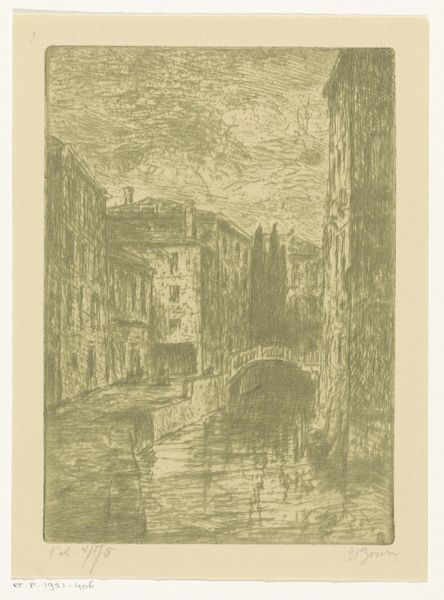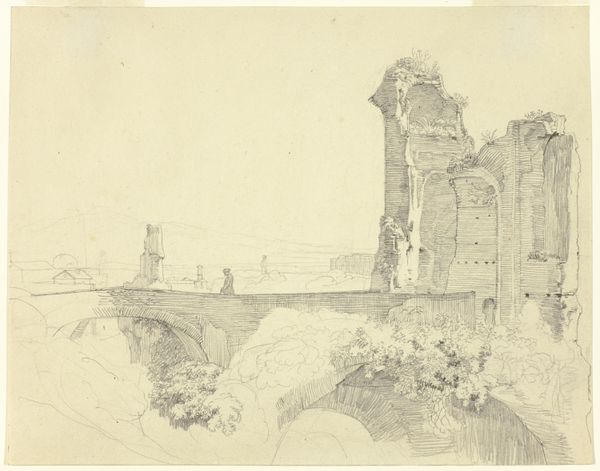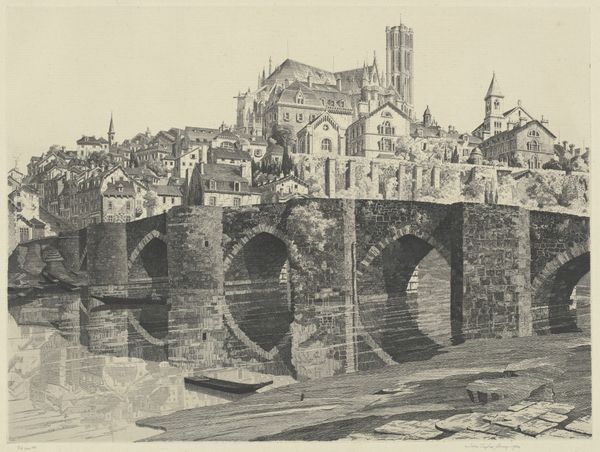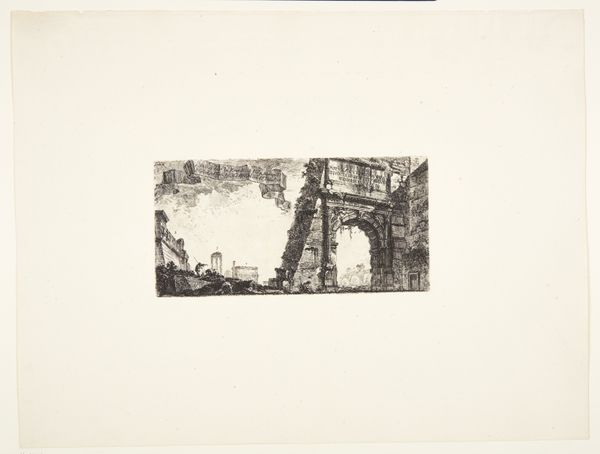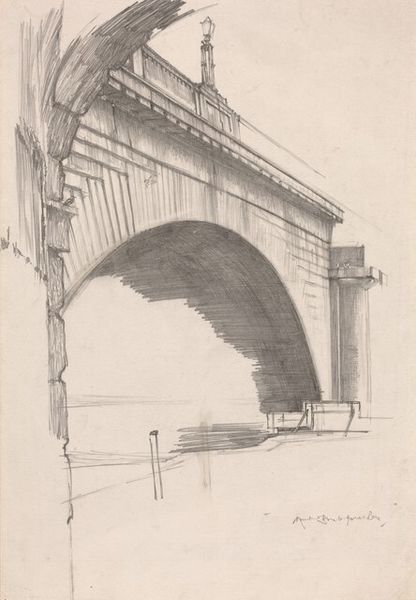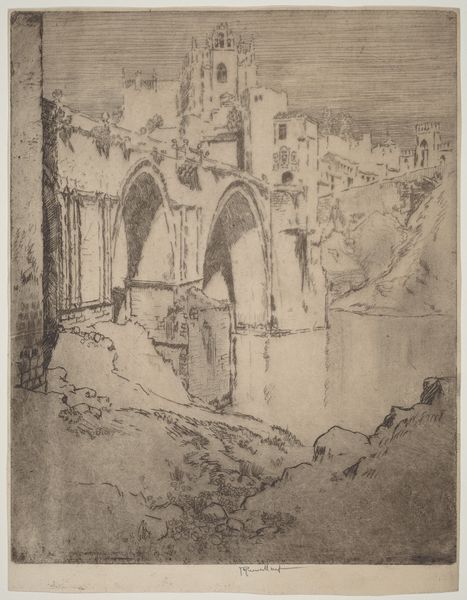
print, etching
# print
#
etching
#
landscape
#
etching
#
orientalism
#
cityscape
#
realism
Dimensions: height 380 mm, width 277 mm
Copyright: Rijks Museum: Open Domain
Editor: This is "Puente de Alcántara over de Taag in Toledo," an etching made by Wijnand Otto Jan Nieuwenkamp in 1901. I find the heavy lines and almost imposing perspective create a sense of timelessness and strength. What do you see in this piece? Curator: What strikes me is how Nieuwenkamp's work can be placed within broader dialogues about Orientalism, even in its rendering of a Spanish cityscape. How does the artist’s perspective reflect the socio-political gaze of the early 20th century, particularly in representing Toledo, a city layered with Islamic, Jewish, and Christian histories? Think about whose stories are centered and whose are marginalized by this particular framing. Editor: That’s fascinating. I hadn't considered the framing in that light. I was more focused on the architectural details of the bridge itself. Curator: The details are important, but the choice to highlight this particular bridge, its imposing structure, and its relation to the city, begs the question: What does such a monumental structure represent? Bridges not only connect physical spaces but also cultures, histories, and power structures. Whose movement is facilitated and whose is restricted by this architecture, both literally and metaphorically? Editor: So you are saying the artist is depicting more than just the bridge, but a system? Curator: Precisely. Look at how the artist uses light and shadow. Does it enhance a sense of romanticism, or does it subtly highlight the power dynamics embedded in the city's architecture? How might the depiction reinforce colonial narratives about Europe and the ‘Orient’? Editor: That makes me see it differently. I guess it’s important to question the intent and the possible biases an artist brings, even in a seemingly straightforward landscape. Curator: Absolutely. Art is never created in a vacuum. Considering the historical and cultural contexts allows us to engage more critically with what we are seeing and experiencing. Editor: Thank you, I've learned so much more about how to look at a piece! I was missing some intersectional insight into the art.
Comments
No comments
Be the first to comment and join the conversation on the ultimate creative platform.
